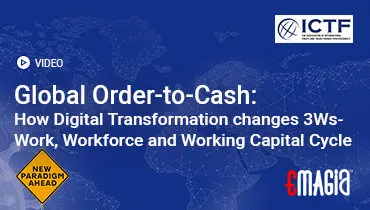Introduction to Automate Remittance
In today’s rapidly evolving financial environment, ensuring efficiency and precision in remittance processing is more critical than ever. Manual processes are becoming less effective in handling the growing volume and complexity of financial transactions. This is where automated remittance processing comes into play, offering a streamlined, error-reduced, and faster approach to managing payments.
Understanding Remittance Processing
What is Remittance Processing?
Remittance processing refers to the handling and management of payments received by a business, ensuring that these payments are correctly applied to the appropriate customer accounts. Accurate remittance handling is essential for maintaining clean financial records and ensuring a steady cash flow.
What is Remitting Payment?
Making a remittance means transferring funds to settle a financial obligation. In a business context, it typically refers to customers paying for goods or services provided.
The Evolution of Remittance Processing
Traditional Methods
Historically, remittance processing was a manual endeavor, involving the physical handling of checks, payment stubs, and data entry. Manual methods were often inefficient and susceptible to mistakes, which caused processing delays and led to errors in financial data.
The Shift to Automation
With advancements in technology, businesses began adopting automated remittance processing systems. These systems utilize software to scan, read, and apply payments, significantly reducing processing time and errors.
Components of Remittance Processing Services
Remittance Processing Software
This type of software streamlines the way payments are received, processed, and recorded. It connects with existing financial platforms to boost operational efficiency and precision.
Remittance Processors
Remittance processors are the tools or systems that handle the actual processing of payments. They can range from simple scanning devices to complex software solutions that manage large volumes of transactions.
Remittance Processing Solutions
These are comprehensive services that combine software, hardware, and expertise to manage the entire remittance process. They are designed to handle various payment types and integrate seamlessly with a company’s financial systems.
Benefits of Automating Remittance Processing
Increased Efficiency
Automation significantly reduces the time required to process payments, allowing businesses to handle larger volumes without additional resources.
Improved Accuracy
Automated systems minimize human errors, ensuring that payments are correctly applied and financial records are accurate.
Enhanced Cash Flow
Faster processing times lead to quicker access to funds, improving a company’s cash flow and financial stability.
Better Customer Experience
Accurate and timely processing of payments enhances customer satisfaction and trust in the company’s financial operations.
Challenges in Remittance Processing
Managing Multiple Payment Channels
Businesses often receive payments through various channels, including checks, electronic transfers, and online payments. Coordinating multiple payment channels can be a demanding and time-intensive task.
Reconciling Payments to Accounts
Ensuring that each payment is correctly matched to the appropriate account or invoice is critical. Errors in applying payments can result in incorrect financial data and may frustrate customers.
Processing Payments on Time
Delays in processing payments can negatively impact cash flow and interfere with accurate financial documentation. Timely processing is essential for maintaining financial health.
Implementing Automated Remittance Processing
Assessing Business Needs
Before implementing an automated system, businesses should assess their specific needs, including the volume of transactions, types of payments received, and existing financial systems.
Choosing the Right Solution
Selecting a remittance processing solution that aligns with the company’s requirements is crucial. When choosing a solution, it’s important to look at aspects like scalability, ease of integration, and available customer support.
Training and Support
Proper training for staff and ongoing support from the solution provider ensure a smooth transition and continued efficiency.
How Emagia Enhances Remittance Processing
Emagia’s Advanced Solutions
Emagia offers cutting-edge remittance processing solutions that leverage artificial intelligence and machine learning to automate and optimize payment processing. Their systems are designed to handle high volumes of transactions with precision and speed.
Seamless Integration
Emagia’s technology works effortlessly with current financial systems, allowing businesses to upgrade without operational interruptions.
Enhanced Reporting and Analytics
With Emagia, businesses gain access to advanced reporting and analytics tools, providing insights into payment trends, cash flow, and financial performance.
Improved Customer Experience
By ensuring accurate and timely processing of payments, Emagia enhances the overall customer experience, fostering trust and satisfaction.
FAQs on Remittance Processing
What is remittance processing?
Remittance processing involves the handling and management of payments received by a business, ensuring they are correctly applied to customer accounts.
What is remitting payment?
Sending a remittance means transferring money to fulfill a payment responsibility—typically a customer paying a company.
What are remittance processing services?
These services encompass the tools and processes used to manage the receipt and application of payments, including software, hardware, and support services.
What is remittance processing software?
This software automates the collection, processing, and application of payments, integrating with financial systems to streamline operations.
What is a remittance processor?
A remittance processor is a tool or system that handles the actual processing of payments, from scanning checks to applying electronic payments.
What are remittance processing solutions?
These are comprehensive services that manage the entire remittance process, combining software, hardware, and expertise.
What is remittance payment processing?
This refers to the methods and systems used to handle and apply payments received by a business.
What is remitting payment?
A remittance refers to the transfer of funds to satisfy a financial obligation, typically sent by a customer to a company.
What are remittance processing solutions?
These are comprehensive services that manage the entire remittance process, combining software, hardware, and expertise.
Conclusion
In today’s competitive business world, automating remittance processing has become essential. The right technology can significantly improve operational speed, accuracy, and customer satisfaction. Emagia’s advanced remittance processing solutions offer a comprehensive approach to managing payments, ensuring businesses stay ahead in the competitive financial landscape.



